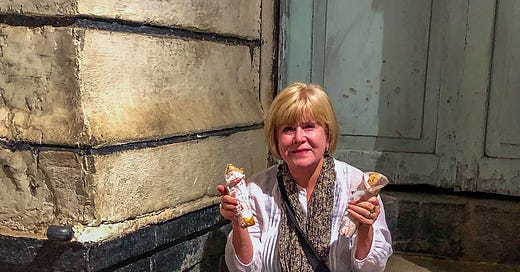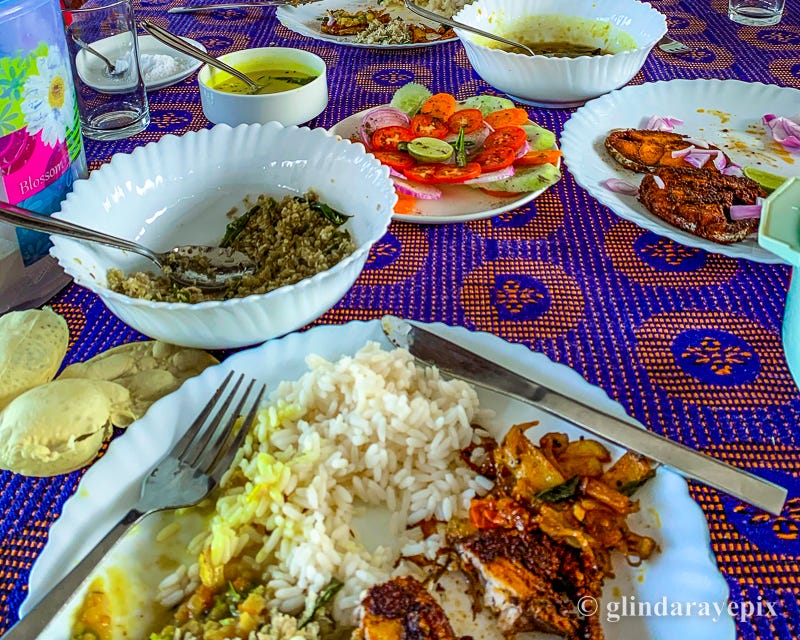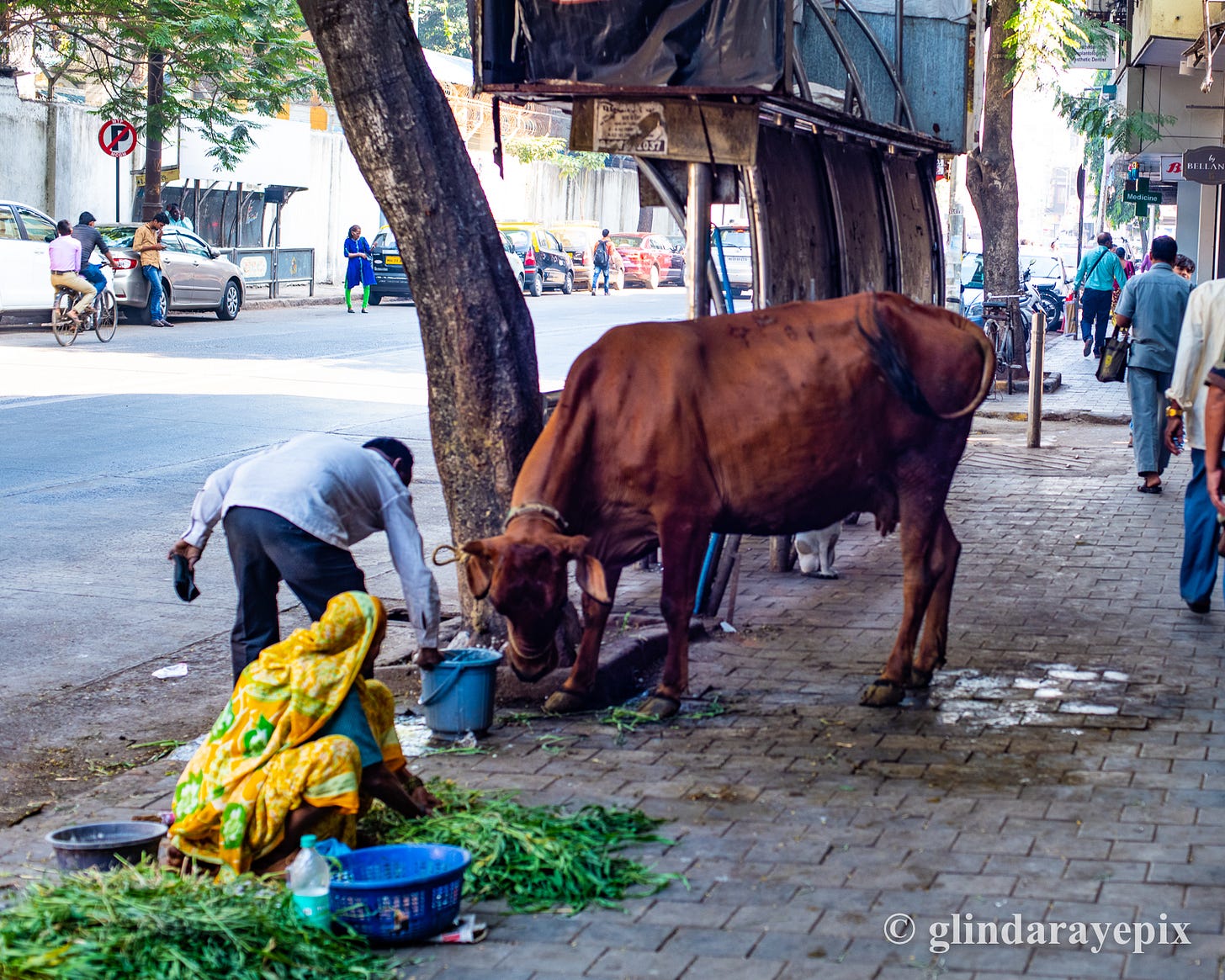It will either infuriate you or endear them to you, but the British, with their astonishing tin ear for foreign languages, have left a trail of odd monikers everywhere they've ventured on the globe. Venice, Florence, and Naples instead of Venezia, Firenze, and Napoli. Frogs for French, Jerries for Germans, Eyeties for Italians. Bombay and Mysore for Mumbai and Mysuru.
In the 19th century Indian Raj, one favorite culinary mangling gave us the term curry—from the Tamil kari, meaning nothing more than "sauce" or "stew". Even today, tikka masalas are all the rage in England, but the word masala means nothing more than "mixture". Neither of these terms, in fact, says a thing about the ingredients in a dish.
But they do key in on one timeless bit of foodie serendipity, which is that roasted and ground spices are the key to Indian cuisine—just like sauces to the French, pasta to the Italians, barbecuing to the Americans, and chopping and dicing to the Chinese.
Every venerable Indian amah guards her secret masala recipe, passed down and augmented through Lord knows how many generations. And at the opposite extreme from fast food, every Indian meal you consume will be a unique product of that chef's family, culture, religion, personal tastes, and mood.
After years of traveling in India, we no longer buy pre-mixed powders, but roast, grind, and mix our own. We still blend something you'd recognize as curry powder, but only for western and Jamaican dishes (deviled eggs, anyone?).
For Indian food, there's nothing like the aroma that greets the visitor when you throw together a five-course meal with that morning's fresh-ground spices. And it's really not that ambitious.
The possibilities are mathematically endless, but savory Indian dishes start in two basic directions:
Coriander—cumin—turmeric (in the Indian shops, dhanya—jeera—haldi). Mix in a variety of other spices, and you have something you'll recognize as western curry powder.
Cardamom—cumin—cinnamon (elaichi—jeera—daalacheenee). Start here, and eventually you'll arrive at some version of garam masala.
To these bases, Indian chefs and amahs add:
Saffron (kesar), peppercorns (kalimirch), chili (laal mirch), fenugreek (methi), fennel (saunf), cloves (laung), nutmeg (jaiphal), and anise (chakri phool).
Dried bay (tej pattee) and curry leaves (karee pattee).
The seeds of celery (ajavaayan), caraway (shah jeera), poppy (khas-khas), sesame (til), and black mustard (raai).
Not to mention asafoetida (don't ask).
Not to forget garlic, ginger, onions, and tamarind.
Not to neglect ghee (butter, more or less), coconut, and yogurt.
Like any other cuisine, there are a gazillion distinct regional variations:
On the west coast of America, you'll most likely be familiar with Punjabi from Northwest India, Kashmir, and Pakistan (think lamb, tomatoes, Tandoor).
The British started out in Bengal in Eastern India, so that tends to dominate their preferences (the color yellow comes to mind).
One of our favorite styles originated in Kerala in the south—think seafood, chilis, and coconut.
In the big cities like Mumbai and Delhi, you'll find everything from extremely sophisticated (and expensive) inter-regional feasts to some of the most renowned street food in the world.
Four common threads run through most Indian cuisine:
Not a lot of heat:
As Westerners, we naturally expected our mouths to demand CPR after every blistering bite, but most Indian cooking is actually quite mild. And subtle. Even coconut, which can overwhelm a Thai curry, is held on a tight leash. There's a spice in everything you eat, but if one taste (cumin?) blows away the others, you might want to request an upgrade.
Not a lot of alcohol:
Alcohol isn't necessarily banned, especially at the big international hotels. And in Maharashtra and Karnataka, India boasts two of our favorite wine regions on the planet. And there's nothing for atmosphere quite like a gin and tonic on a steamy afternoon at a crumbling colonial tennis club. But Indians just aren't big drinkers. Most of the time, with our meals, we take a spectacularly refreshing mango lassi (mango, yogurt, cardamom, and mint).
Not a lot of meat:
14% of the country is horrified by the taste of pork. 80% reveres the cow for befriending and comforting the deity Krishna through his ancient tribulations. Unfortunately for fish, sheep, and chickens, their ancestors never made the honored (or dishonored) lists—but then there's 30% of the population who don't much care for consuming any living being. So this is an easy (if less than doctrinaire) country to be a vegetarian.
Again, there are exceptions, and you can find pretty much any meat in some obscure corner of the culture. But as a visitor, why would you want to? We consume as much as we want, but no one ever suffered a guilty conscience from gorging on vegetables.
Not a lot of drama:
In general, we expected a much more complicated relationship with food than we found in India. In a mega-state like Maharashtra, there exists the potential for every kind of misery (New York and London come to mind), but widespread hunger, at least in the urban areas, isn't the scourge it used to be. Obesity is rare, but so is visible malnutrition. Famine has all but disappeared.
As for the foreigner's digestive adjustment—to put it delicately—that issue has never proved more than vaguely inconvenient for us. We both sport pretty weak stomachs, and face an amoebic challenge flying coast to coast in America, much less to Europe, Africa, or Asia. A week or so before arrival in-country, we start a regimen of probiotics, but only because we drop all inhibitions at the first exotic aroma. And as for ice cubes, brushing teeth, suspicious plastic bottles, and all the other water-based shibboleths, we keep meaning to start paying attention. Maybe someday we'll find out the hard way. Maybe we won't.
So…
As Indian-obsessed foodies, we're just getting started. We did consume a lunch in Mumbai served by one of the premier chefs of India, where the chocolate dessert truffles were served suspended in a magnetic field (we have no idea why, but it took the waiter longer to suspend than it took us to swallow). But our most memorable meals have been among the least gaudy and expensive.
And that’s the true secret of Indian food—simple ingredients blended with mouth-watering spices and cooked to perfection.
So easy.
So relaxed.
So good.













Pretty accurate observations especially the expensive vs economical options. That's one reason you didn't notice malnutrition much. Almost everything including food, education, housing, clothes has a cheaper alternative, which allows people to save enough money to send their kids abroad for higher studies or even overseas vacation.
Now I’m starving. 😎